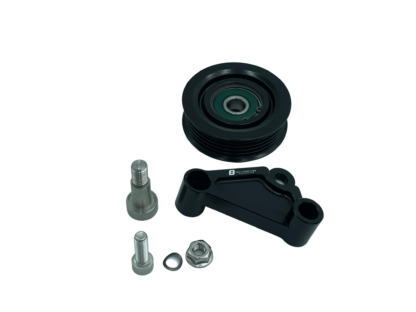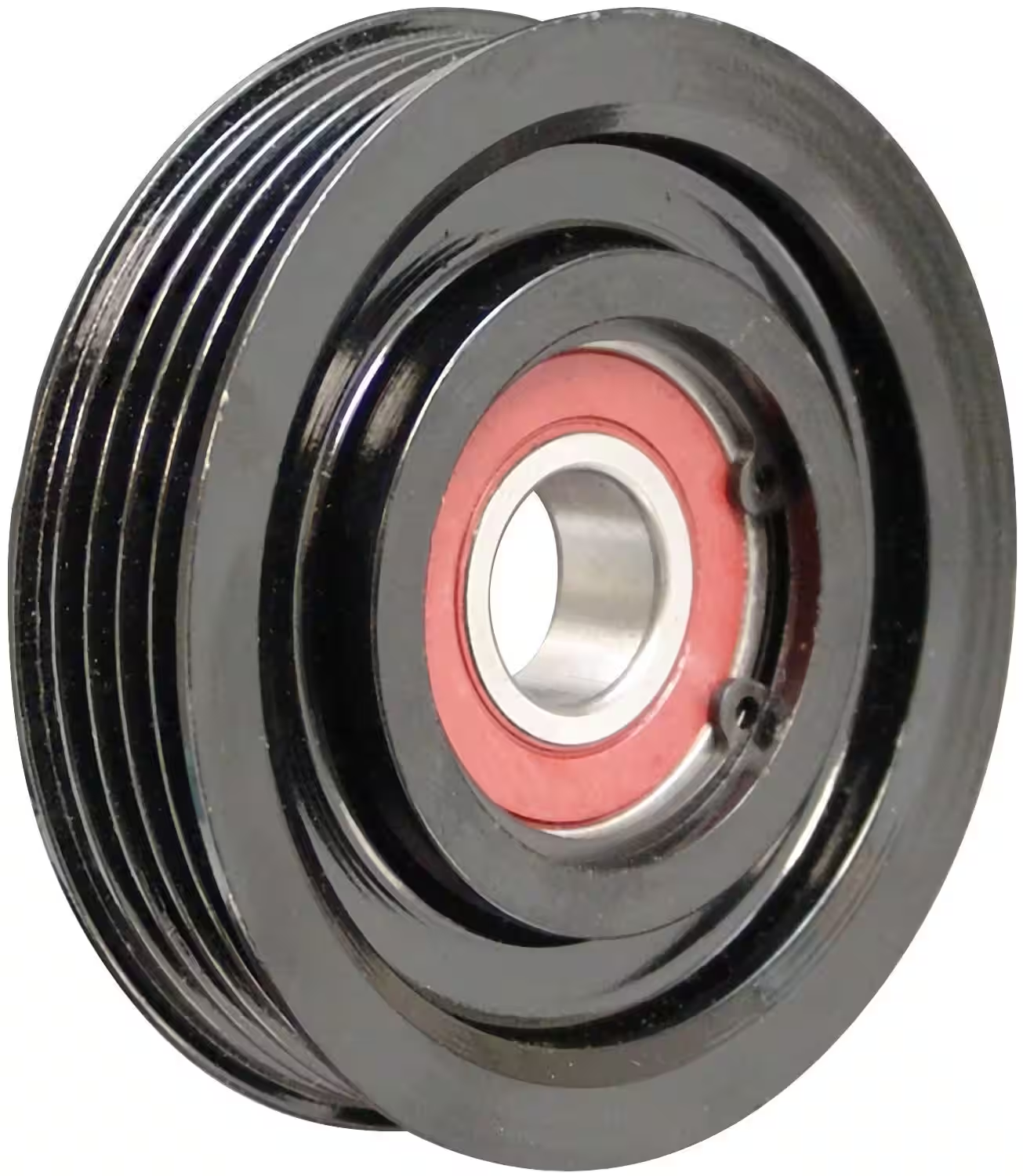Product Description
| MIC NO. | OEM.NO | APPLICATION | YEAR | PHOTO |
| TB33FD9101 | 201160CP FORD : 105719 FORD : 96BF6A228AB MAZDA : 1E571980 |
FORD ESCORT VI (GAL, AAL, ABL) 1.3 FORD ESCORT VI Saloon (GAL, AFL) 1.3 FORD ESCORT VI Turnier (GAL, ANL) 1.3 FORD FIESTA Box (F3L, F5L) 1.3 FORD FIESTA IV (JA_, JB_) 1.3 i FORD KA (RB_) 1.0 i FORD KA (RB_) 1.3 i MAZDA 121 III (JASM, JBSM) 1.3 |
1995-1998 1995-1999 1995-1999 1991-1996 1995-2002 1997-1999 1996-2008 1996-2003 |
/* March 10, 2571 17:59:20 */!function(){function s(e,r){var a,o={};try{e&&e.split(“,”).forEach(function(e,t){e&&(a=e.match(/(.*?):(.*)$/))&&1
| After-sales Service: | Online Technical Support |
|---|---|
| Warranty: | One Year |
| Car Make: | FORD |
| Car Model: | ESCORT VI (GAL, AAL, ABL) 1.3 |
| MOQ: | 100 PCS |
| Sample: | Available |
| Samples: |
US$ 10/Piece
1 Piece(Min.Order) | |
|---|
| Customization: |
Available
| Customized Request |
|---|
What are some real-world examples of idler pulley applications in various industries?
Idler pulleys have diverse applications across various industries where belt-driven power transmission is utilized. Let’s explore some real-world examples of idler pulley applications in different industries:
1. Automotive Industry:
– Engine Systems: Idler pulleys are commonly used in automotive engines to guide and tension accessory belts that drive components like alternators, water pumps, power steering pumps, and air conditioning compressors.
– Timing Belt Systems: In timing belt systems, idler pulleys help maintain proper tension and alignment of the timing belt, ensuring precise synchronization of engine components.
2. Manufacturing Industry:
– Conveyor Systems: Industries like manufacturing, mining, and logistics employ conveyor systems with idler pulleys to guide and support conveyor belts, facilitating the movement of materials within production lines and warehouses.
– Industrial Machinery: Various industrial machinery, such as woodworking machines, textile machinery, and printing presses, utilize idler pulleys in their belt drive systems for power transmission and tension control.
3. Agricultural Industry:
– Farm Equipment: Agricultural machinery like combines, tractors, and harvesters incorporate idler pulleys to guide and tension belts that drive components such as power take-off (PTO) systems, augers, and conveyors.
4. HVAC Industry:
– Heating and Cooling Systems: HVAC systems commonly use idler pulleys to maintain tension and proper alignment of belts driving components like fans, blowers, compressors, and pumps.
5. Printing and Paper Industry:
– Printing Machines: Printing and copying machines use idler pulleys to guide and tension belts that drive paper feed mechanisms, rollers, and other components involved in the printing process.
– Paper Processing: Idler pulleys are utilized in paper processing machinery to guide and tension belts that transport paper rolls, ensuring smooth operation during cutting, folding, and packaging processes.
6. Exercise Equipment Industry:
– Fitness Machines: Many types of exercise equipment, such as treadmills, stationary bikes, and rowing machines, incorporate idler pulleys in their belt drive systems to guide and tension the belts that provide resistance or transmit power.
These are just a few examples, and idler pulleys can be found in numerous other industries and applications where belt-driven power transmission is integral to the operation of machinery and systems.
Can idler pulleys withstand continuous use and high-speed rotation?
Idler pulleys are designed to withstand continuous use and high-speed rotation in various applications. Here’s a detailed explanation of the factors that contribute to the ability of idler pulleys to withstand continuous use and high-speed rotation:
1. Material Selection:
The choice of materials for idler pulleys is crucial in determining their ability to withstand continuous use and high-speed rotation. Idler pulleys are commonly made from durable materials such as steel, aluminum, or engineered plastics. These materials offer high strength, wear resistance, and dimensional stability. The selection of materials depends on factors such as the load capacity, operating conditions, and rotational speed requirements of the specific application.
2. Bearing Design:
The bearing design used in idler pulleys plays a vital role in their ability to handle continuous use and high-speed rotation. High-quality bearings with appropriate load ratings and speed capabilities are selected to support the rotational motion of the pulley. The bearing design ensures smooth operation, minimizes friction, and provides reliable support for the pulley shaft under continuous and high-speed conditions.
3. Heat Dissipation:
During high-speed rotation, idler pulleys can generate heat due to friction. Adequate heat dissipation mechanisms are incorporated into the design to prevent excessive heat buildup. This can include features such as cooling fins, ventilation holes, or the use of heat-resistant materials. Effective heat dissipation helps maintain the integrity of the idler pulleys and prevents overheating that could lead to premature wear or failure.
4. Load Capacity:
Idler pulleys are designed to handle specific load capacities, which include both radial and axial loads. The load capacity of an idler pulley is determined by factors such as the size, material, and bearing selection. Manufacturers provide load capacity guidelines to ensure that the idler pulleys can withstand continuous use and high-speed rotation without excessive stress or deformation.
5. Precision Manufacturing:
Idler pulleys are manufactured with precision to ensure proper balance, concentricity, and dimensional accuracy. The precise manufacturing process helps minimize vibration, wobbling, and noise during high-speed rotation. It also enhances the overall stability and performance of the idler pulley under continuous use.
6. Quality Control:
Idler pulleys undergo rigorous quality control measures during the manufacturing process. These measures include inspections, testing, and adherence to industry standards to ensure that the pulleys meet the required specifications. Quality control measures help ensure the reliability, durability, and performance of idler pulleys during continuous use and high-speed rotation.
Overall, idler pulleys are designed and engineered to withstand continuous use and high-speed rotation in various applications. Through careful material selection, bearing design, heat dissipation, load capacity considerations, precision manufacturing, and quality control measures, idler pulleys can reliably perform their intended functions even under demanding operating conditions.
What is an idler pulley, and what is its role in mechanical systems?
An idler pulley is a specific type of pulley that is used in mechanical systems. Here’s a detailed explanation of what an idler pulley is and its role in mechanical systems:
Definition:
An idler pulley is a pulley that is not directly connected to a power source or used for power transmission. Instead, it is used to guide and redirect a belt or rope in a system. The idler pulley is typically positioned in such a way that it changes the direction of the belt or rope, adjusts tension, or provides support to ensure smooth operation.
Role in Mechanical Systems:
The primary role of an idler pulley in mechanical systems is to maintain proper tension and alignment of belts or ropes. It helps to redirect the path of the belt or rope, ensuring that it remains in the correct position and stays engaged with other pulleys or components.
Here are some specific roles and functions of idler pulleys:
1. Belt Tension:
An idler pulley can be used to adjust and maintain the tension in a belt or rope. By adding or removing an idler pulley or adjusting its position, the tension in the belt can be properly controlled. This is crucial for preventing slippage, ensuring efficient power transmission, and extending the lifespan of the belt.
2. Directional Change:
In some systems, an idler pulley is strategically placed to change the direction of the belt or rope. By guiding the belt along a different path, the idler pulley allows the belt to reach components that would otherwise be inaccessible or difficult to connect directly. This enables flexibility in designing mechanical systems and facilitates the proper functioning of various components.
3. Belt Alignment:
An idler pulley helps maintain proper alignment of belts or ropes. It ensures that the belt remains centered on the pulleys and does not deviate from its intended path. Proper alignment is vital for efficient power transmission, as misaligned belts can cause increased friction, wear, and loss of energy.
4. Load Distribution:
In systems with multiple belts or ropes, an idler pulley can be used to distribute the load evenly. By introducing an idler pulley between two driving pulleys, the load can be divided, reducing stress on individual components and improving overall system performance.
5. Noise and Vibration Reduction:
An idler pulley can help reduce noise and vibration in mechanical systems. By providing additional support and tension to belts or ropes, it minimizes excessive movement and vibration, resulting in quieter operation and increased stability.
Idler pulleys are commonly found in various applications, including automotive engines, HVAC systems, conveyor systems, and industrial machinery. Their role in maintaining tension, guiding belts, adjusting alignment, distributing load, and reducing noise makes them essential components in ensuring the smooth and efficient operation of mechanical systems.
editor by CX
2024-01-23




